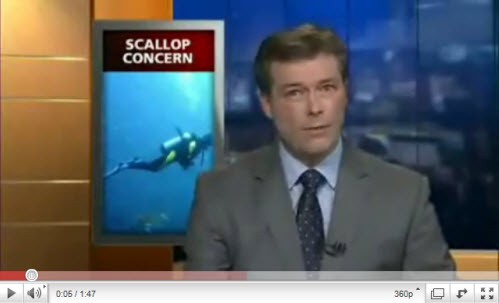Premier Brumby is making a “tilt” for the Green vote — but how much work does the Victorian Government have to do to shore up their cred on this issue? And what is green now anyway? With issues such as global warming, shutting down coal-fired power stations and sequestering CO2 in geological formations dominating the agenda, it seems that wildlife and marine life conservation is a lower priority, even with large sections of the environment movement.
The Victorian Government, through the Department of Primary Industry, has apparently contracted surveys in the Gippsland Basin to locate a geological formations suitable for storing, (sequestering) CO2. There has been extensive seismic testing to map these potential storage sites. Most commonly used for exploration in the oil and gas industry, seismic testing involves the creation of an explosion sufficient to generate shock waves to travel through the earth’s crust and bounce it back to the surface. The variations in these signals are frequently used to map oil and gas deposits and now find places suitable to store CO2.
Seismic testing has also been implicated in harming the hearing of whales, and various fish species. It is banned in the Great Barrier Reef Marine Park and still is banned in Victorian Marine Parks. Last week, scallop fishermen went to check beds in the path of this testing from earlier this year only to find that the scallops, instead of being prime to harvest, were dead.
A pre-fishing survey established that the beds were healthy and should be ready to harvest now. There has been decades of seismic testing and other records of dead scallops in Bass Strait, however this is the first research sampling of scallops before and after subjecting them to seismic testing. Fishermen believe that the scallops, that can “jump” from the sea bed when disturbed, were killed by over stimulation — an issue that could easily be resolved by further research.
It would be ironic indeed if in trying to stop global warming — a key environment issue — we were killing portions of the marine environment that sequester carbon — like that stored in scallop shells and dozens of other molluscs and carbon-storing invertebrates that may be similarly affected. The irony sadly multiplies when banning fishing in “No Take Zones” hides the impact of pollution, habitat loss and seismic testing — realities that require management.
Managing CO2 emissions is equally problematic. The Victorian Government is just about to implement fuel reduction burning of nearly 385,000 hectares annually across the state. Even at an average of 100 tonnes of CO2 generated per hectare, this source alone could generate 38 million tonnes of CO2 emissions annually. The emission from fuel reduction burning undermines the impact of closing down Hazelwood Power Station to reduce emissions.
Additionally many thousands of hectares of national parks will be subjected to “ecological burns”.
These sorts of fires are advocated by many botanists to “improve” plant biodiversity — but their impact on mammals, reptiles, amphibians and birds is all but ignored and can be devastating. Many are killed in fires, others deprived of hollow trees that can take a century to grow for nesting and essential cover from predators, feral and native. Again there appears to be little research with no pre- and post-fire fauna surveys mandated as part of this fuel reduction burning program.
The obvious opportunity to employ country people to protect the bush from fire by putting fires out (a novel idea these days) and to be employed managing forests to sequester CO2 seems to be beyond the environment movement and government.
It is certainly not easy being green in Victoria if you happen to be in a bird, mammal, fish — or especially a scallop.








Not to mention all the thugs in the scallop industry.